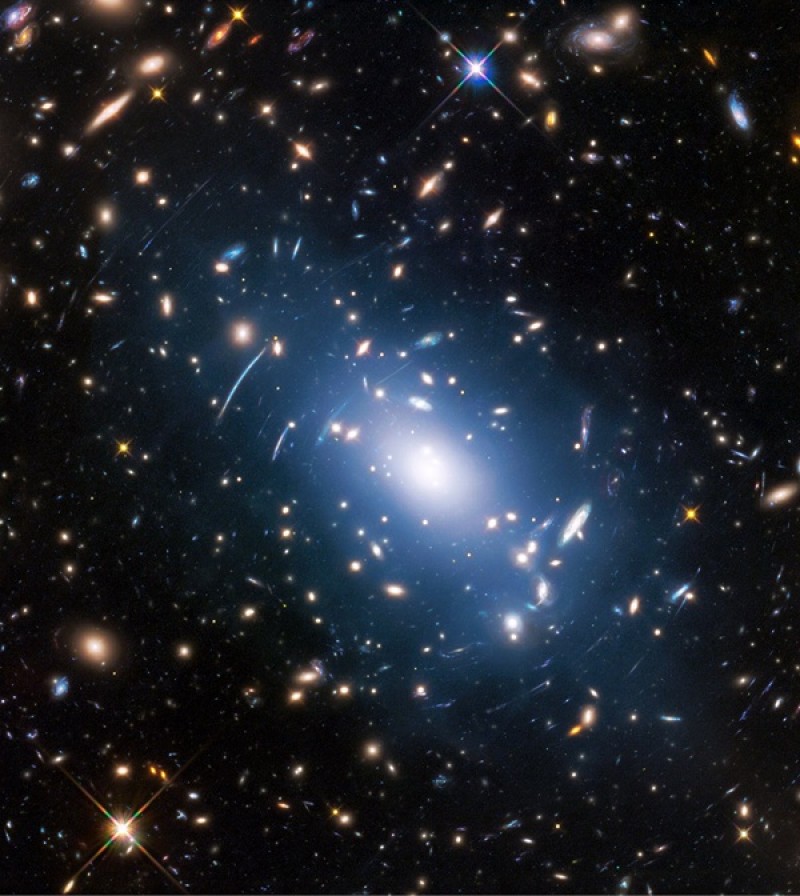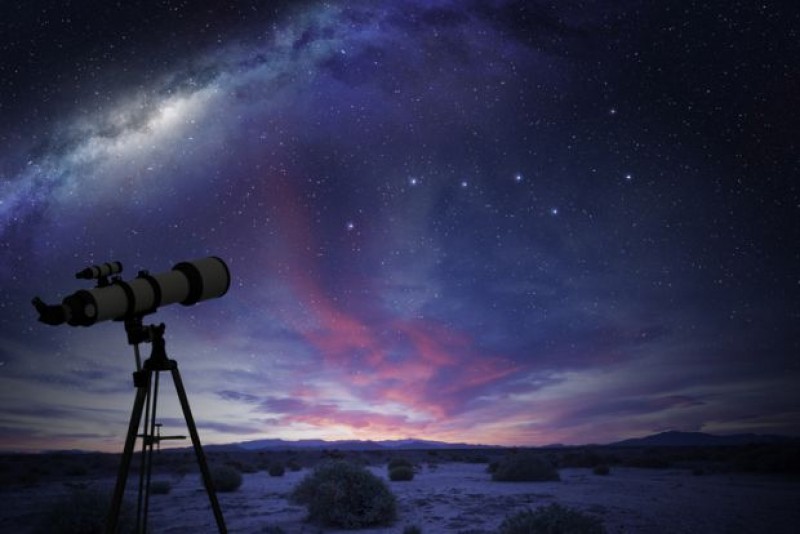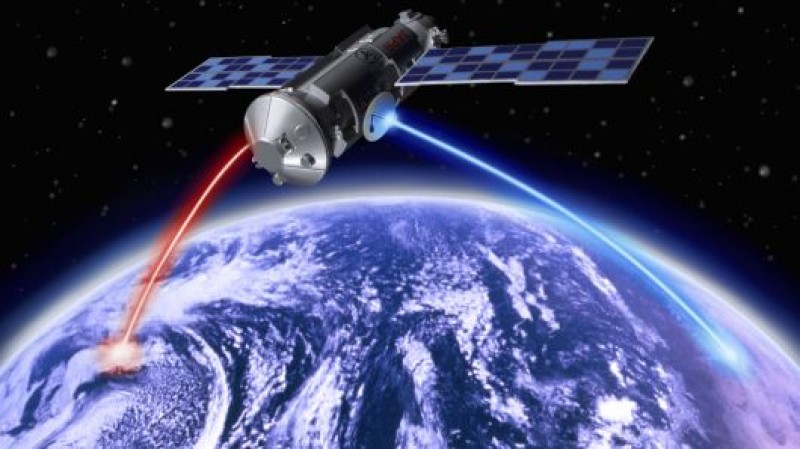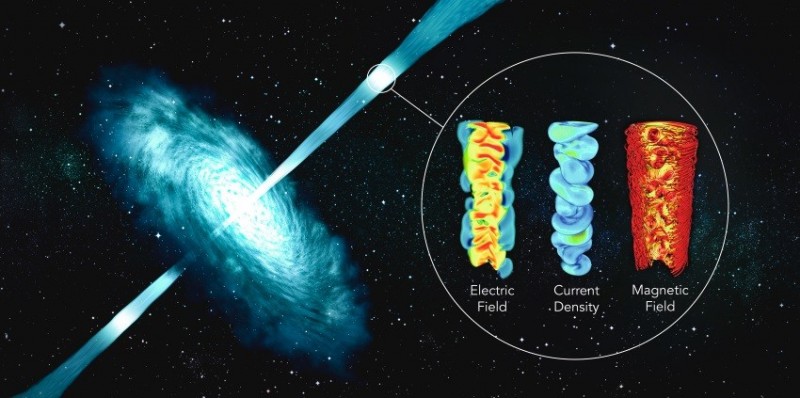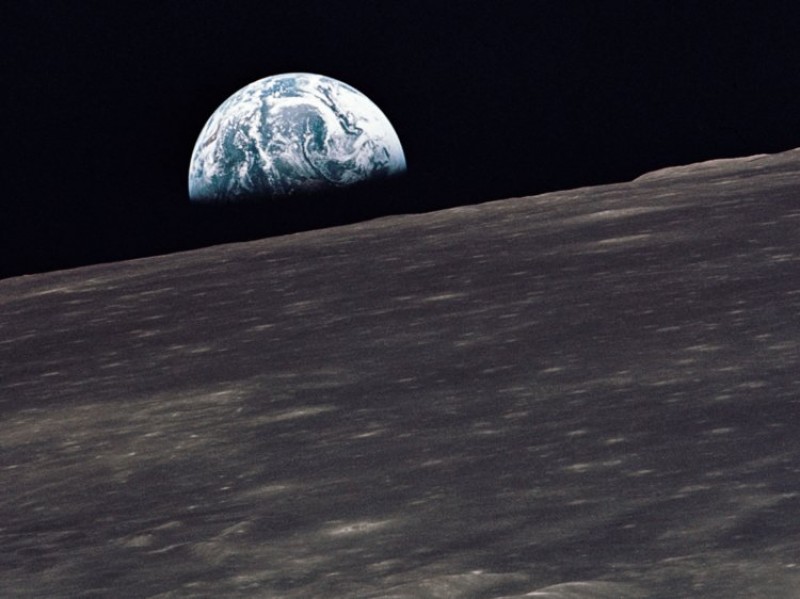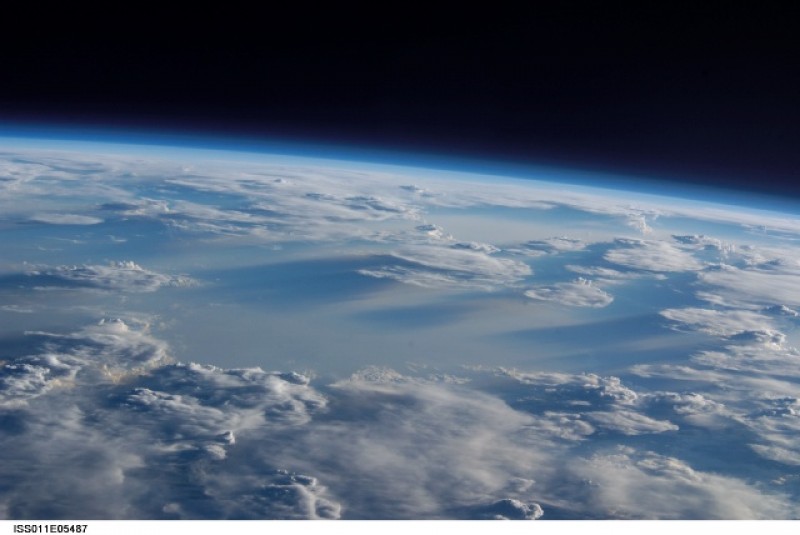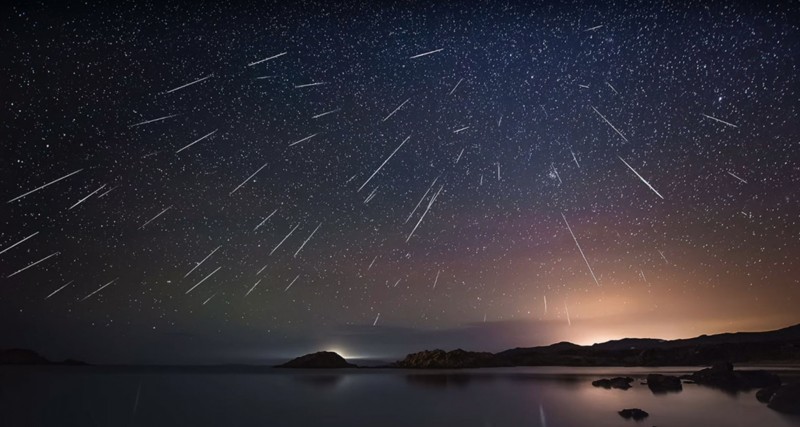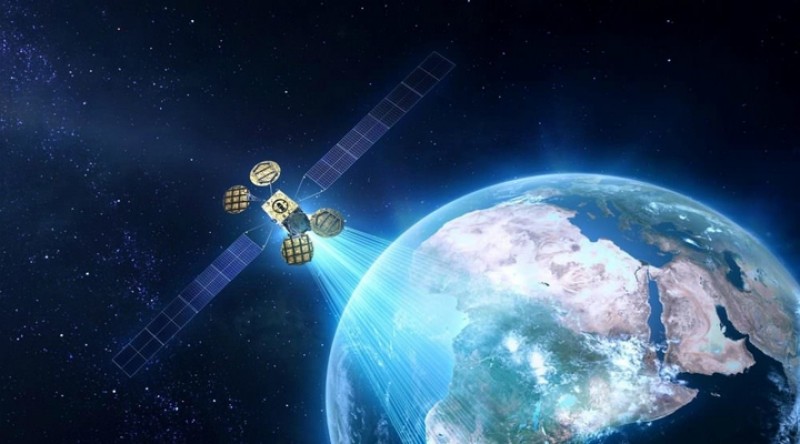News
These new Hubble images let astronomers 'see' dark matter
Thursday, December 27th 2018 09:28 PM
Dark matter remains one of the great mysteries of modern science. A theoretical form of matter, dark matter is thought to make up about 85 percent of all matter in the universe. Because dark matter doesn’t absorb, reflect or emit light, it is very hard to spot. In fact, it has never been directly observed and some even question whether or not dark matter actually exists.This new method, however, lets astronomers detect dark matter in galaxy clusters using what’s called intracluster light. Intracluster light is faint starlight that’s created by interactions between galaxies. When galaxies interact, their respective stars can be ripped apart from them, left to float freely throughout the galaxy cluster.
“These stars have an identical distribution to the dark matter, as far as our current technology allows us to study,” lead study author Mireia Montes of the University of New South Wales, said in a statement.
Because the intracluster light aligns...
Read More
Read More
Top Astronomy Events For 2019
Wednesday, December 26th 2018 11:02 PM
You might’ve heard the news. We wrote a book this past year: The Universe Today’s Ultimate Guide to Observing the Cosmos: Everything You Need to Know to Become an Amateur Astronomer. Judging from reader feedback thus far, one of the most popular parts of the book is Chapter 10, where we list the top astronomical events by year for the coming six years. True story… we picked six (2019 to 2024) to stretch out the list to touch on the April 8th, 2024 total solar eclipse.
Anyhow, we enter into the timeline for this list in just under a week. What we thought we’d do here is offer an excerpt from the book for top astronomy events for 2019, retooled for the web, and expanded on a bit with added discussions and illustrations. The very best astro-events for each category are underlined.
The circumstances for the November 11th, 2019 transit of Mercury. Credit: Xavier Jubier.
A profound solar minimum is also expected...
Read More
Read More
The Sky This Week from December 21 to December 30
Saturday, December 22nd 2018 10:50 PM
Friday, December 21Earth’s winter solstice occurs at 5:23 p.m. EST. At that moment, the Sun reaches its farthest point south in the sky. The solstice marks the official beginning of winter in the Northern Hemisphere, and tonight has more hours of darkness than any other. From mid-northern latitudes, however, the earliest sunset occurred about two weeks ago and the latest sunrise won’t happen until early January.Saturday, December 22Full Moon officially arrives at 12:49 p.m. EST, but our satellite looks completely illuminated all night. You can find it rising in the east just after sunset and peaking in the south shortly after midnight local time. It dips low in the west by the time morning twilight begins. As the Full Moon closest to the winter solstice, it climbs higher in the sky than any other Full Moon during the year. It lies among the background stars of western Gemini tonight, near the feet of the Twins.Sunday, December 23Mercury remains a nice sight in predawn twi...
Read More
Read More
Satellite start-up raises $100 million to put cloud data storage in space
Thursday, December 20th 2018 11:10 PM
Satellite start-up Cloud Constellation closed a $100 million batch of funding.
Based in Los Angeles, Cloud Constellation wants to launch Space Belt, a network of data centers built on satellites in orbit.
"We're eliminating the risk [of data breaches] associated with terrestrial infrastructure," Dennis Gatens, Cloud Constellation chief commercial officer, told CNBC. "We're bringing to market a solution that provides what we consider the strongest security capability possible."
The $100 million comes from HCH Group, a subsidiary of Chinese consumer electronics giant Haier Group. The funds are a part of a larger venture capital round Cloud Constellation is working to close. The company declined to specify what its valuation is.
"HCH's financial commitment to SpaceBelt builds on our momentum to execute on our vision to offer global data protection that leverages commercial space," Cloud Constellation CEO Cliff Beek said in a statement.
The company warns that devastating cyber attacks...
Read More
Read More
Tangled Magnetic Fields in Black Holes Create the Most Powerful Particle Accelerators in the Universe
Wednesday, December 19th 2018 11:12 PM
Magnetic field lines tangled like spaghetti in a bowl, as found in black holes, might be behind the most powerful particle accelerators in the universe. That’s the result of a new computational study by researchers from the Department of Energy’s SLAC National Accelerator Laboratory, which simulated particle emissions from distant active galaxies. SLAC scientists have found a new way to explain how these black hole plasma jets boost particles to the highest energies observed in the universe. The results could prove useful for fusion and accelerator research on Earth.
At the core of these active galaxies, supermassive black holes launch high-speed jets of plasma – a hot, ionized gas – that shoot millions of light years into space. This process may be the source of cosmic rays with energies tens of millions of times higher than the energy unleashed in the most powerful manmade particle accelerator.
“The mechanism that creates these extreme particle energie...
Read More
Read More
'Farout!' Newfound Object Is the Farthest Solar System Body Ever Spotted
Monday, December 17th 2018 11:34 PM
A newly discovered object is the most-distant body ever observed in the solar system — and the first object ever found orbiting at more than 100 times the distance from Earth to the sun.
The discovery team nicknamed the object "Farout," and its provisional designation from the International Astronomical Union is 2018 VG18. Preliminary research suggests it's a round, pinkish dwarf planet. The same team spotted a faraway dwarf planet nicknamed "The Goblin" in October.
"All that we currently know about 2018 VG18 is its extreme distance from the sun, its approximate diameter, and its color," David Tholen, a researcher at the University of Hawaii and part of the discovery team, said in a statement. "Because 2018 VG18 is so distant, it orbits very slowly, likely taking more than 1,000 years to take one trip around the Sun."
Farout is 120 astronomical units (AU) from the sun — one AU is the distance between Earth and the sun,...
Read More
Read More
WHY DEFINING THE BOUNDARY OF SPACE MAY BE CRUCIAL FOR THE FUTURE OF SPACEFLIGHT
Saturday, December 15th 2018 12:46 AM
On Thursday morning, just after 8AM PT, the two pilots on board Virgin Galactic’s spaceplane ignited the vehicle’s rocket engine high above the Mojave Desert for a total of 60 seconds, soaring to an altitude of 82.7 kilometers. When the vehicle reached its maximum height, the Virgin Galactic team celebrated: they had finally reached space — a new record for the company.
At least, Virgin Galactic argues it went to space. But for many, that’s not where space is.
At some point, the higher you travel through the sky, Earth’s dense atmosphere starts to thin, eventually giving way to the vacuum of space. But the exact height at which airspace ends and outer space begins has never been totally agreed upon, with many different groups offering up varying answers. Now, one international organization is considering changing its definition for where space “starts,” potentially bringing the world closer to a consensus on...
Read More
Read More
Look Up! Gleaming Geminid Meteor Shower of 2018 Peaks Tonight
Thursday, December 13th 2018 11:12 PM
Head for dark, clear skies tonight — overnight Dec. 13-14 — to see the shooting stars of the Geminid meteor shower overhead.
The shower is likely to be the best meteor shower of 2018, and it will be visible in both hemispheres — though the Northern Hemisphere will have an advantage. While the August Perseid meteor shower is more famous, experts are saying to get outside for this one as well.
"Maybe [it's less well known] because it's cold for so many during this shower's peak," Diana Hannikainen, Sky & Telescope's observing editor, said in a statement. "But the Geminids are often the best display of 'shooting stars' all year."
According to Sky & Telescope, the Geminids are set to peak at 7:30 a.m. EST (1130 GMT) on Dec. 14, when Earth plunges through the thickest part of the trail of dust and debris left behind by the asteroid 3200 Phaethon as it orbits the sun. That means that the best times to watch are when it'...
Read More
Read More
Can humans have babies on Mars? It may be harder than you think.
Tuesday, December 11th 2018 11:07 PM
Fast-forward to several decades or a half-century from now, and it’s not inconceivable that humans could be living on Mars—building habitats, trundling around in rovers, mining the subsurface for resources, and producing the first generation of bipedal Martians.
Except, no one really knows if humans can successfully reproduce in space, whether that’s during spaceflight or on another planet. To be clear, having sex in (much) lower gravity is a simple physics problem. But a host of unknowns swirl around how space environments affect the actual biological sequences of events that must unfold with precision for a new human to grow, from fertilization to weaning.
It’s not as though we haven’t tried to sort it out. Mice, rats, salamanders, frogs, fish, and plants have been the subjects of experiments looking at how spaceflight affects reproduction. To put it simply, though, the results so far are mixed and inconclusive.
By s...
Read More
Read More
Aerospace Corp. to lay out strategy to ‘outpace the threat’ in space
Monday, December 10th 2018 10:29 PM
WASHINGTON — Air Force Secretary Heather Wilson often reminds audiences that America is “the best in the world at space, and adversaries know it.” But nobody can predict how long that advantage will last. The Pentagon warned in the 2018 National Defense Strategy that “new threats to commercial and military uses of space are emerging” and the nation must “prioritize investments in resilience, reconstitution and operations to assure our space capabilities.”
The challenge for the Air Force — or a Space Force if one is established in the future — is how to take concepts like “resilience” and “reconstitution” and apply them to actual programs as new systems are being developed. A game plan for how that might be done will be rolled out in the coming weeks by the Aerospace Corp. — a nonprofit federally funded think tank that provides technical advice to the U.S. Air Force and the National Reconnaissance Offic...
Read More
Read More
